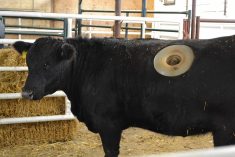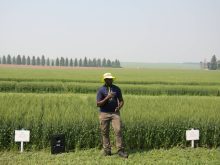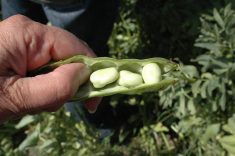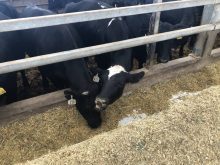Farmers are making some pretty big decisions off test strips — and that scares JP Pettyjohn.
“We could flip a coin and pretty much come up with the same answer,” said Pettyjohn, a crop technology instructor at Lakeland College.
“I don’t want an answer. I want the right answer.”
Small-plot trials have been widely used in agricultural research (and informally on farms) to test a host of practices, including inputs, crop control products, seeding rates, pest control, and many others.
They’re quicker, easier, and cheaper than field-scale trials, but it takes trained and adept researchers to extrapolate the findings to broader farming operations, said Pettyjohn.
Read Also

Grazing ‘sweet spot’ boosts pasture performance
Timing-focused approach to pasture management touted to boost forage growth, livestock gains while also cutting farmer labour and inputs
“It’s important for producers to have good information to ensure they make good decisions,” Pettyjohn said during a FarmTech panel discussion.
“Scientifically statistically relevant” information needs to be repeated, randomized, and replicated, added Jenn Walker, research manager for Alberta Pulse Growers.
“Farmers want to be on the leading edge,” said Walker. “They want to maximize profitability. We need solid research to do that.”
Oddly enough, a survey of producers found they have more confidence in their own strip trials compared to small-plot research results. But their confidence in the quality of data “skyrocketed” when they moved from small plots to larger ones, said Pettyjohn.
And while he’s “fairly comfortable with small-plot data,” he said that “if the farmer is less skeptical of the large-plot data, that’s where we need to be.”
“It will give producers more comfort that this data is solid and they can make a million-dollar decision on it if they have to,” he said.
That’s just what Walker did.
She brought together a team of researchers, agronomists, and farmers to see what it would take to apply small-plot research to a bigger scale. They created a research protocol around a question they already knew the answer to — the optimal seeding rate for yellow peas.
That may seem counterintuitive for a research project, but it’s a little like being asked your name during a lie detector test. There’s only one right answer, and by looking at a known quantity, the tester can more easily calibrate the rest of the test to ensure the results are valid.
“Our end goal is to get a vehicle we can do research with but first, we need to make sure we have the right kind of vehicle,” said Walker.
The researchers and agronomists worked with nine producers to standardize their trials as much as possible to eliminate variables that could affect the results. Then the producers seeded their fields at low, medium, and high rates to see whether the field-scale trial would bear out the small-plot results.
The point of the first trial year was to make sure that the research protocol was sound, and the team managed to check that box off pretty easily.
“We now have a vehicle that we can apply to every single producer’s farm to get scientifically relevant information,” said Walker.
“We’re still in the early stages of making sure it’s robust, but it is a recipe that every individual could apply in their own situation.”
That will allow producers to look at questions they have for their own farms that no one else is asking, said agronomist Ken King, who was involved in the project.
“The methodology has to be rigorous enough that the information is meaningful, but simple enough that when farmers want to try it on their own farms, it will work for them,” said King.
But that’s a ways down the road. The study is entering its second year, and the research team will be fine tuning the results after that. (That’s where repeatability, replication, and randomization comes in.)
“Will a farmer take this and use it? I think in the end they will,” said King. “We’re not there yet.”















